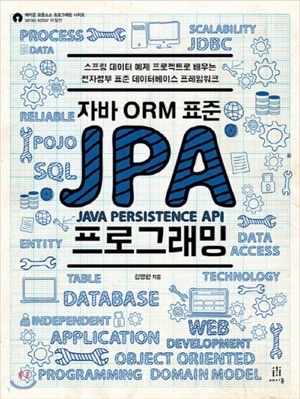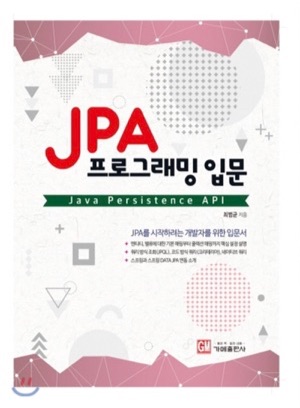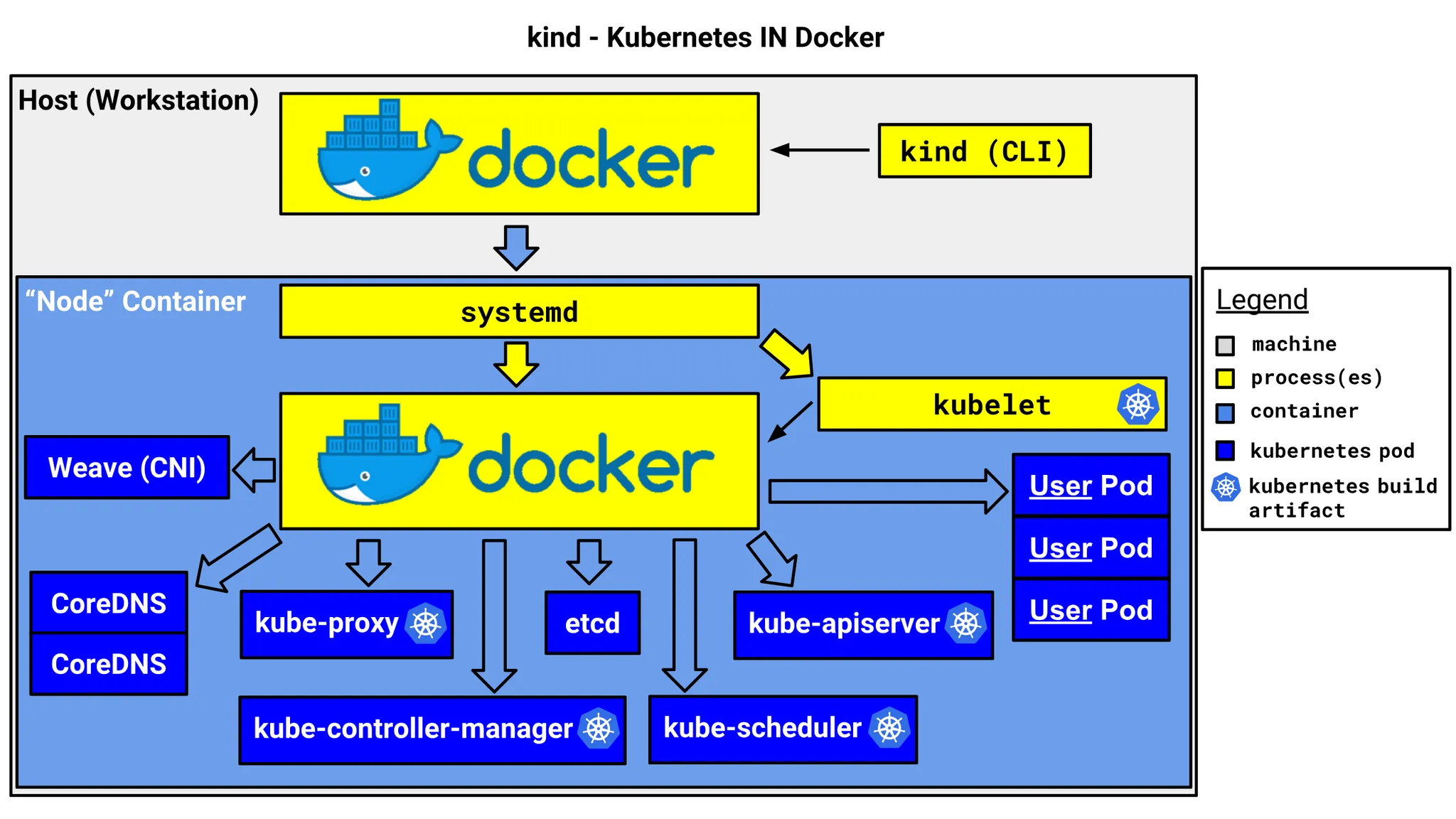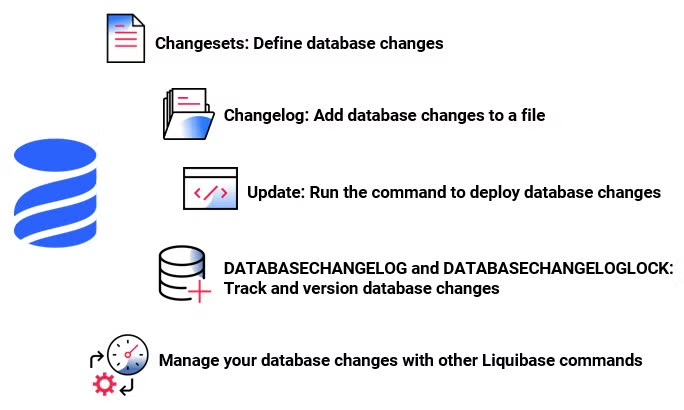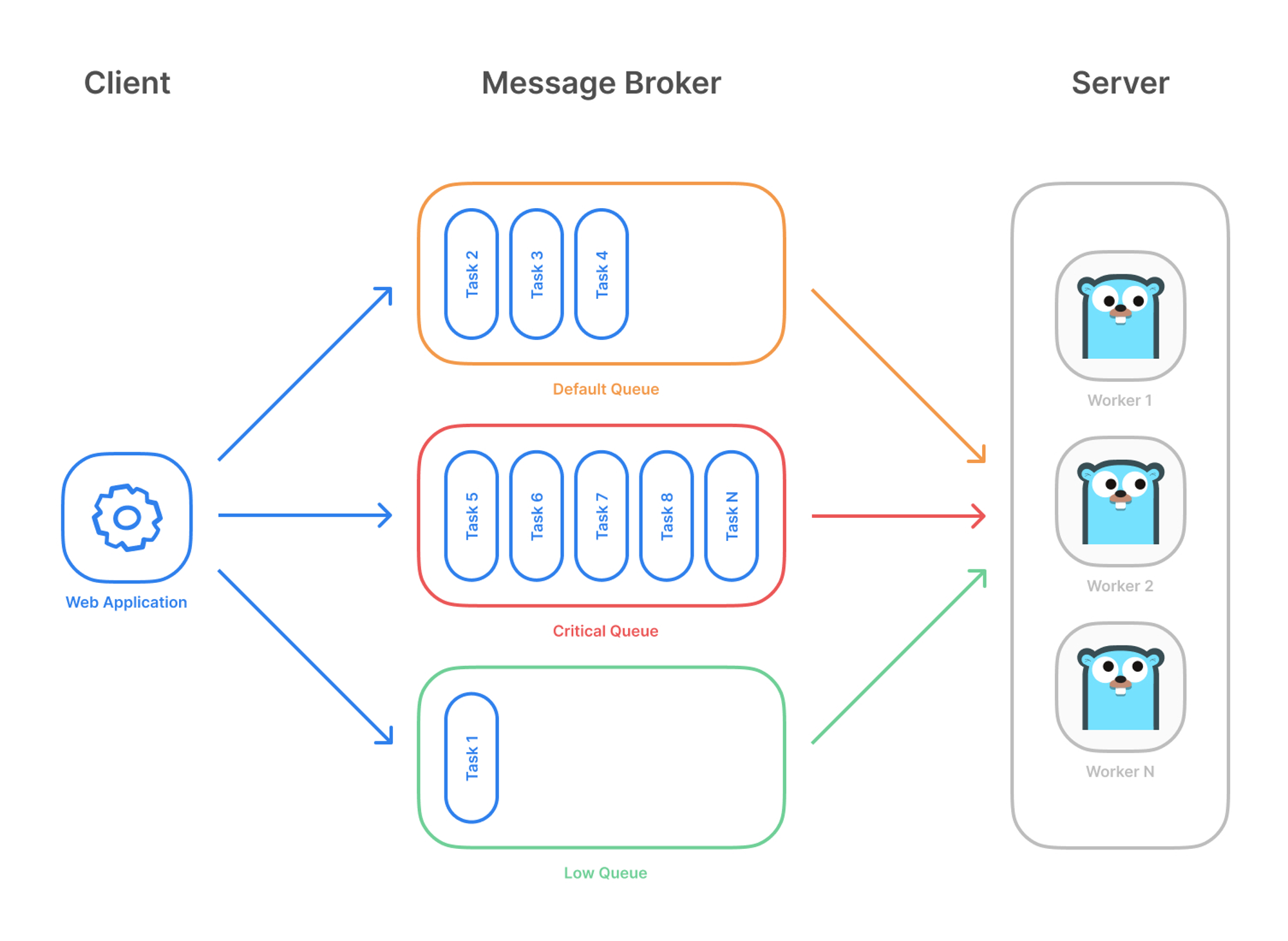1. 들어가며
JPA 연관관계 매핑에 대한 내용은 JPA 연관관계 매핑 정리 포스팅을 참고해주세요. 이번 포스팅에서는 JPA에서 가장 자주 사용하는 다대일(N:1)과 그 반대 방향인 일대다(1:N) 연관관계에 대해서 알아보겠습니다.
- Post (일)
- Comment (다) > - 테이블에서는 다쪽에 외래 키가 존재한다
- 양방향 관계에서는 다쪽이 연관관계의 주인이 된다
2. 개발 환경
작성한 샘플 코드는 아래 깃허브 링크를 참고해주세요.
- OS : Mac OS
- IDE: Intellij
- Java : JDK 1.8
- Source code : github
- Software management tool : Maven
3. 다대일 (N:1) 연관관계
3.1 다대일 연관관계
3.1.1 다대일 단방향
Post와 Comment 코드를 보면서 알아보겠습니다.

Post 엔티티에는 연관관계 관련 어노테이션은 없습니다.
@Getter
@Setter
@Entity
@NoArgsConstructor
@Table(name = "post")
public class Post extends DateAudit {
@Id
@GeneratedValue(strategy = GenerationType.IDENTITY)
@Column(name = "post_id")
private Long postId;
private String title;
...(생략)...
@Lob
private String content;
...(생략)...
}
@Getter
@Setter
@Entity
@NoArgsConstructor
@Table(name = "comment")
public class Comment extends DateAudit {
@Id
@GeneratedValue(strategy = GenerationType.IDENTITY)
@Column(name = "comment_id")
private Long commentId;
...(생략)...
//연관관계 매팽
@ManyToOne
@JoinColumn(name = "post_id")
private Post post;
...(생략)...
}
Comment 엔티티에만 Post 필드가 있어서 @ManyToOne 어노테이션으로 단방향으로 관계를 맺습니다.
- @ManyToOne
- 다대일 관계로 설정한다
- @JoinColumn
- 외래 키인 post_id를 지정한다
JoinColumn과 ManyToOne 옵션 설정에 대한 설명은 다음과 같습니다.
3.1.1.1 @JoinColumn의 속성
@JoinColumn 어노테이션은 외래 키를 매핑할 때 사용하는 어노테이션이고 기본 속성은 다음과 같습니다.
| 속성 | 설명 |
|---|---|
| name | 매핑할 외래 키의 이름을 지정할 때 사용한다기본 값 : 필드명 + _ + 참조하는 테이블의 컬럼명 (ex. post_post_id) |
| referenceColumnName | 외래 키가 참조하는 대상 테이블의 컬럼명을 의미한다기본 값 : 테이블의 기본 키 컬럼명(ex. post_id) |
| uniquenullableinsertableupdatablecolumnDefinitiontable | @Column의 속성과 같다 |
3.1.1.2 @ManyToOne의 속성
@ManyToOne 어노테이션은 다대일 연관관계로 매핑할 때 사용되고 속성에 따라서 쿼리 구문 생성이 조금씩 다르게 생성됩니다. 조회하는 경우에는 쿼리가 어떻게 생성이 되는지 로그로 확인할 필요가 있습니다.
| 속성 | 설명 |
|---|---|
| optional | true이면 해당 객체에 null이 들어갈 수 있다는 의미이다. 참고로 @Column 어노테이션에서도 nullable=true로 세팅해도 null이 들어갈 수 있다기본 값 : true옵션 설정에 따라 select 구문 쿼리 어떻게 생성되는지 FAQ 4.3을 참고해주세요 |
| fetch | fetchType이 EAGER이면 연관된 엔티티를 바로 로딩한다. fetchType이 LAZY이면 연관된 엔티티를 바로 로딩하지 않고 실제로 해당 객체를 조회할 때 해당 엔티티를 로딩한다기본값 @ManyToOne=FetchType.EAGER@OneToMany=FetchType.LAZY |
| cascade | 영속성 전이 설정을 할 수 있다. 설정 값은 아래 cascadeType을 참고해주세요. |
| targetEntity | 연관된 언테티의 타입 정보를 설정하는데 거의 사용하지 않는다. |
3.1.1.3 CascadeType의 값
Post(부모) -> Comment(자식)
Cascade 옵션은 부모 엔터티를 영속 상태로 만들 때 연관관계로 맺어진 자식 엔터티도 함께 영속 상태로 만들어 주고 싶을 때 설정할 수 있는 기능입니다. 여러 값은 다음과 같이 설정할 수 있습니다.
Post와 Comment관계에서는 별도로 cascade 설정은 하지 않았습니다. Post를 생성할 때 Comment는 없을 수 있으니까요.
| 속성 값 | 설명 |
|---|---|
| PERSIST | 부모 엔티티를 저장할 때 자식 엔터티도 같이 저장된다. |
| REMOVE | 부모 엔티티를 삭제하면 자식 엔터티도 같이 삭제된다. |
| DETACH | 부모 엔티티가 detach 상태로 되면 자식 엔터티도 같이 detach 되어 변경사항이 반영되지 않는다. |
| REFRESH | 부모 엔터티가 DB로부터 데이터를 다시 로드하면 자식 엔터티도 DB로부터 데이터를 다시 로딩한다 |
| MERGE | 부모 엔티티가 detach 상태에서 자식 엔터티를 추가/변경한 이후에 부모 엔티티가 merge를 수행하면 자식 엔터티도 변경사항이 적용된다. |
| ALL | 모두 cascade 옵셕이 전용된다. |
지금까지 ManyToOne 어노테이션에서 적용할 수 있는 여러 옵션을 알아보았습니다. 다대일로 설계한 엔터티가 제대로 저장/조회가 잘되는지 Unit Test에서 확인합니다.
Post 객체를 하나를 생성하고 저장이 잘되었는지 조회해서 실제 저장 값을 확인합니다.
@Slf4j
@RunWith(SpringRunner.class)
@DataJpaTest
public class PostRepositoryTest {
@Autowired
private PostRepository postRepository;
@Test
public void save_post_확인() {
postRepository.save(Post.builder()
.title("title1")
.author("frank")
.likeCount(5)
.content("content").build());
List<Post> posts = postRepository.findAll();
assertThat(posts.get(0).getTitle()).isEqualTo("title1");
}
}
Comment 엔티티도 저장하고 조회해보겠습니다. Post 객체도 생성해서 저장합니다.
@Slf4j
@RunWith(SpringRunner.class)
@DataJpaTest
public class CommentRepositoryTest {
@Autowired
private CommentRepository commentRepository;
@Autowired
private PostRepository postRepository;
@Test
public void save_post_comment_확인() {
Post post = postRepository.save(Post.builder()
.title("title")
.author("postAuthor")
.likeCount(5)
.build());
Comment comment = Comment.builder()
.author("frank")
.content("content").build();
comment.setPost(post);
commentRepository.save(comment);
List<Comment> comments = commentRepository.findAll();
assertThat(comments.get(0).getAuthor()).isEqualTo("frank");
assertThat(comments.get(0).getPost().getAuthor()).isEqualTo("postAuthor");
}
}
3.1.2 다대일 양방향
다대일 양방향은 Post와 Comment 엔터티에 서로를 참조하는 필드가 존재합니다.

Post와 Comment 코드를 보면서 양방향인 경우에는 코드가 어떻게 달라지는 지 알아보겠습니다.
@ToString(exclude = "post")
@Entity
@Table(name = "comment")
public class Comment extends DateAudit {
@Id
@GeneratedValue(strategy = GenerationType.IDENTITY)
@Column(name = "comment_id")
private Long commentId;
...(생략)...
//연관관계 매팽
@ManyToOne
@JoinColumn(name = "post_id", nullable = false)
private Post post; //연관관계의 주인이 된다
...(생략)...
}
Comment 엔티티는 기존과 같습니다.
@Entity
@Table(name = "post")
public class Post extends DateAudit {
@Id
@GeneratedValue(strategy = GenerationType.IDENTITY)
@Column(name = "post_id")
private Long postId;
...(생략)...
//양방향 연관관계 설정
@JsonIgnore //JSON 변환시 무한 루프 방지용
@OneToMany(mappedBy = "post", fetch = FetchType.LAZY)
private List<Comment> comments = new ArrayList<>();
...(생략)...
}
Post -> Comment는 일대다인 관계로 @OneToMany 어노테이션을 사용했고 List comments 컬렉션으로 선언하였습니다.
3.1.2.1 연관관계 주인
테이블은 외래 키 하나만 존재하는 반면에 객체를 양방향으로 설정하면 외래 키를 관리하는 곳이 2곳이 생깁니다. 한쪽에서만 관리하도록 하기 위해서 연관관계 주인을 설정할 필요가 있습니다.
다대일에서는 다 쪽이 연관관계 주인이 되므로 @OneToMany에서 mappedBy 속성의 값으로 연관관계 주인을 지정해줘야 합니다. 코드에서는 comments는 연관관계 주인이 아니므로 mappedBy로 Comment 엔티티에 있는 post가 연관관계의 주인이라고 선언하여 알려줍니다.
- 연관관계 주인 (ex. Comment.post)
- 여기서만 연관관계를 설정할 수 있다.
- new Comment().setPost(new Post())
- 엔티티 매니저는 연관관계 주인 (ex. Comment.post)를 통해서만 외래 키를 관리한다
- DB에 반영이 된다
- 여기서만 연관관계를 설정할 수 있다.
- 연관관계 주인 아님 (ex. Post.comments)
- 순수한 객체에서만 관리되도록 한다
- post.getComments().add(new Comment())
- DB에 반영이 안된다
- 순수한 객체에서만 관리되도록 한다
3.1.2.2 연관관계 편의 메서드
comment.setPost(post); //(1) 코멘트 -> 포스트
post.getComments().add(comment); //(2) 포스트 -> 코멘트 - 저장시 사용되지 않는다
양방양으로 설정하여 DB뿐만이 아니라 객체 저장/조회 시에도 제대로 반영하기 위해서 위와 같은 코드를 작성해줘야 합니다. 하지만, 실수로 post.getComments().add(commnet)를 호출하지 않아 양방향이 깨질 수 도 있습니다. 이를 방지 하기 위해서 연관관계 설정 시 실수 없이 설정하도록 편의 메서드를 작성하는 게 좋습니다.
public class Comment extends DateAudit {
public void setPost(Post post) {
if (this.post != null) { //기존 포스트 관계를 제거함
this.post.getComments().remove(this);
}
this.post = post;
post.getComments().add(this);
}
}
편의 메서드는 한 곳에만 작성하거나 양쪽 다 작성할 수 있다. 하지만, 양쪽에 다 작성하는 경우에는 무한루프에 빠지지 않도록 체크 조건문을 작성하도록 하자.
public class Comment extends DateAudit {
...(생략)...
public void setPost(Post post) {
this.post = post;
//무한루프에 빠지지 않도록 체크
if (!post.getComments().contains(this)) {
post.getComments().add(this);
}
}
}
public class Post extends DateAudit {
...(생략)...
public void addComment(Comment comment) {
this.comments.add(comment);
//무한루프에 빠지지 않도록 체크
if (comment.getPost() != this) {
comment.setPost(this);
}
}
}
3.2 주의사항
3.2.1 무한 루프에 빠지는 경우
영방향 매핑때에는 무한 루프에 빠질 수 있어서 주의가 필요합니다. 예를 들어 Comment.toString()에서 getPost()를 호출하게 되면 무한 루프에 빠질 수 있습니다.
- 엔티티를 JSON으로 변환하는 경우
- toString() 사용시
- Lombok 라이브러리 사용시에도 발생할 수 있어 toString(exclude={##, ##})으로 제외시킨다
4. FAQ
4.1 언제 양반향, 단방향을 사용해야 하나?
비지니스 로직에 따라서 무엇을 사용할 지 결정하면 됩니다.
-
단반향
- ex. 주문상품(고객이 주문한 상품 정보) -> 상품 (상품에 대한 정보)
- 주문상품에서 상품에 대한 정보를 참조할 일은 많지만, 상품이 주문상품에 대해서 참조할 일은 거의 없어서 단반향으로 설정할 수 있다
-
양반향
- ex. 부서 -> 직원, 직원 -> 부서
- 직원이 어느 부서에서 근무하는 지를 알기 위해서 알고 싶고 또한 한 부서에 어떤 직원이 있는지 도 알고 싶은 경우에는 양반향으로 설정할 수 있다
어느 것을 사용할지 확실하지 않을 때는 우선 단방향으로 매핑을 사용하고 반대 반향으로 객체 그래프 탐색이 필요한 경우에는 양방향으로 변경해서 사용하면 됩니다.
4.2 fetch = FetchType.LAZY로 설정하면 언제 데이터를 로딩해서 가져오게 되는가?
- 즉시 로딩
- 연관관계 맺어진 엔티티를 무조건 즉시 조회한다. JOIN을 사용해서 한번에 조회한다.
- 지연 로딩
- 연관관계 맺어진 엔티티를 프록시를 통해서 나중에 조회한다. 실제 연관 엔티티를 사용할 때 프록시를 초기화 하면서 데이터베이스에서 조회한다.
4.2.1 즉시 로딩
@ManyToOne 어노테이션은 fetch 옵션 FetchType.EAGER 기본값으로 설정되어 Comment 엔티티 조회 시 무조건 Post 객체를 가져옵니다.
@Table(name = "comment")
public class Comment extends DateAudit {
...(생략)...
@ManyToOne
@JoinColumn(name = "post_id")
private Post post;
}
@Test
public void save_post_comment_확인_eager_loading() throws JsonProcessingException {
Post post = postRepository.save(Post.builder()
.title("title")
.author("postAuthor")
.likeCount(5)
.build());
Comment comment = Comment.builder()
.author("frank")
.content("content").build();
comment.setPost(post);
commentRepository.save(comment);
Comment foundComment = commentRepository.findById(1L).get(); //이때 JOIN해서 Post 객체도 가져온다.
assertThat(foundComment.getAuthor()).isEqualTo("frank");
assertThat(foundComment.getPost().getAuthor()).isEqualTo("postAuthor");
}
findById() 메서드 실행시 Comment와 Post를 JOIN해서 데이터를 가져오는 것을 확인할 수 있습니다.
select comment0_.comment_id as comment_1_0_0_, comment0_.create_dt as create_d2_0_0_, comment0_.updated_dt as updated_3_0_0_, comment0_.author as author4_0_0_, comment0_.content as content5_0_0_, comment0_.post_id as post_id6_0_0_, post1_.post_id as post_id1_1_1_, post1_.create_dt as create_d2_1_1_, post1_.updated_dt as updated_3_1_1_, post1_.author as author4_1_1_, post1_.content as content5_1_1_, post1_.like_count as like_cou6_1_1_, post1_.title as title7_1_1_ from comment comment0_ inner join post post1_ on comment0_.post_id=post1_.post_id where comment0_.comment_id=?
4.2.2 지연 로딩
fetch 옵션에 FetchType.LAZY로 설정하면 Comment 엔터티 조회시 바로 DB에서 Post 엔티티를 조회하지 않습니다.
@Table(name = "comment")
public class Comment extends DateAudit {
...(생략)...
@ManyToOne(fetch=FetchType.LAZY)
@JoinColumn(name = "post_id")
private Post post;
}
@Transactional
@Test
public void save_post_comment_확인_lazy_loading_test() throws JsonProcessingException {
Post post = postRepository.save(Post.builder()
.title("title")
.author("postAuthor")
.likeCount(5)
.build());
Comment comment = Comment.builder()
.author("frank")
.content("content").build();
comment.setPost(post);
commentRepository.save(comment);
Comment foundComment = commentRepository.findById(1L).get();
assertThat(foundComment.getAuthor()).isEqualTo("frank");
Post foundPost = foundComment.getPost(); //(1) 객체 그래프 탐색
String author = foundPost.getAuthor(); //(2) 팀 객체 실제 사용
assertThat(author).isEqualTo("postAuthor");
}
(1)에서 Post 엔티티를 가져올 때 조회되지 않고 Post 객체를 실제 사용하는 getAuthor() 메서드가 호출될 때 DB에서 오게 됩니다.
(2)를 호출하면 select 구문은 실행되지 않지만, author를 잘 가져오는 것을 확인할 수 있습니다. 조회 대상이 영속 컨텍스트에 이미 존재 하기 때문에 프록시로 DB를 호출하여 반환하지 않고 객체를 바로 반환해주고 있습니다.
4.3 @ManyToOne 옵션 중에 optional 속성이 true, false인 경우에 쿼리 구문이 어떻게 다르게 생성이 되나?
4.3.1 @ManyToOne (optional=true)인 경우 - 선택적인 관계
기본값이 optional=true이기 때문에 Post 객체는 null이 될 수 있습니다. @JoinColumn의 nullable=true(기본값) 속성인 경우에도 null로 저장될 수 있다는 의미이기도 합니다.
@Table(name = "comment")
public class Comment extends DateAudit {
...(생략)...
@ManyToOne
@JoinColumn(name = "post_id")
private Post post;
}
Comment foundComment = commentRepository.findById(1L).get();
select 구문으로 조회하면 null을 포함될 수 있어서 아래와 같이 LEFT OUTER JOIN으로 생성됩니다.
Hibernate: select comment0_.comment_id as comment_1_0_0_, comment0_.create_dt as create_d2_0_0_, comment0_.updated_dt as updated_3_0_0_, comment0_.author as author4_0_0_, comment0_.content as content5_0_0_, comment0_.post_id as post_id6_0_0_, post1_.post_id as post_id1_1_1_, post1_.create_dt as create_d2_1_1_, post1_.updated_dt as updated_3_1_1_, post1_.author as author4_1_1_, post1_.content as content5_1_1_, post1_.like_count as like_cou6_1_1_, post1_.title as title7_1_1_ from comment comment0_ left outer join post post1_ on comment0_.post_id=post1_.post_id where comment0_.comment_id=?
4.3.2 @ManyToOne(optional=false) 인 경우 - 필수적인 관계
optional=true로 지정하면 Post 객체는 null이 될 수 없기 때문에 필수적으로 포함되어야 합니다. @JoinColumn(nullable=false) 어노테이션 사용하는 경우에도 같습니다.
@Table(name = "comment")
public class Comment extends DateAudit {
...(생략)...
@ManyToOne(optional=false)
@JoinColumn(name = "post_id")
private Post post;
}
select 쿼리 구문을 보면 INNER JOIN으로 생성이 됩니다.
select comment0_.comment_id as comment_1_0_0_, comment0_.create_dt as create_d2_0_0_, comment0_.updated_dt as updated_3_0_0_, comment0_.author as author4_0_0_, comment0_.content as content5_0_0_, comment0_.post_id as post_id6_0_0_, post1_.post_id as post_id1_1_1_, post1_.create_dt as create_d2_1_1_, post1_.updated_dt as updated_3_1_1_, post1_.author as author4_1_1_, post1_.content as content5_1_1_, post1_.like_count as like_cou6_1_1_, post1_.title as title7_1_1_ from comment comment0_ inner join post post1_ on comment0_.post_id=post1_.post_id where comment0_.comment_id=?
엔티티의 속성 구성후 쿼리 구문을 로그로 확인하면서 원하는 쿼리인 지 확인하는 습관이 필요합니다.
5. 정리
JPA 연관관계에서 가장 기본이 되는 다대일 관계에 대해서 알아보았습니다. 이외에도 일대일 그리고 다대다 관계도 익숙해질 수 있도록 시리즈 포스팅에서 알아보겠습니다.
6. 참고
- JPA - one-to-many mapping
- ManyToOne 옵션
- LazyInitializationException
- H2 옵션
- 책 : 자바 ORM 표준 JPA 프로그래맹
- 책 : JPA 프로그래밍 입문
